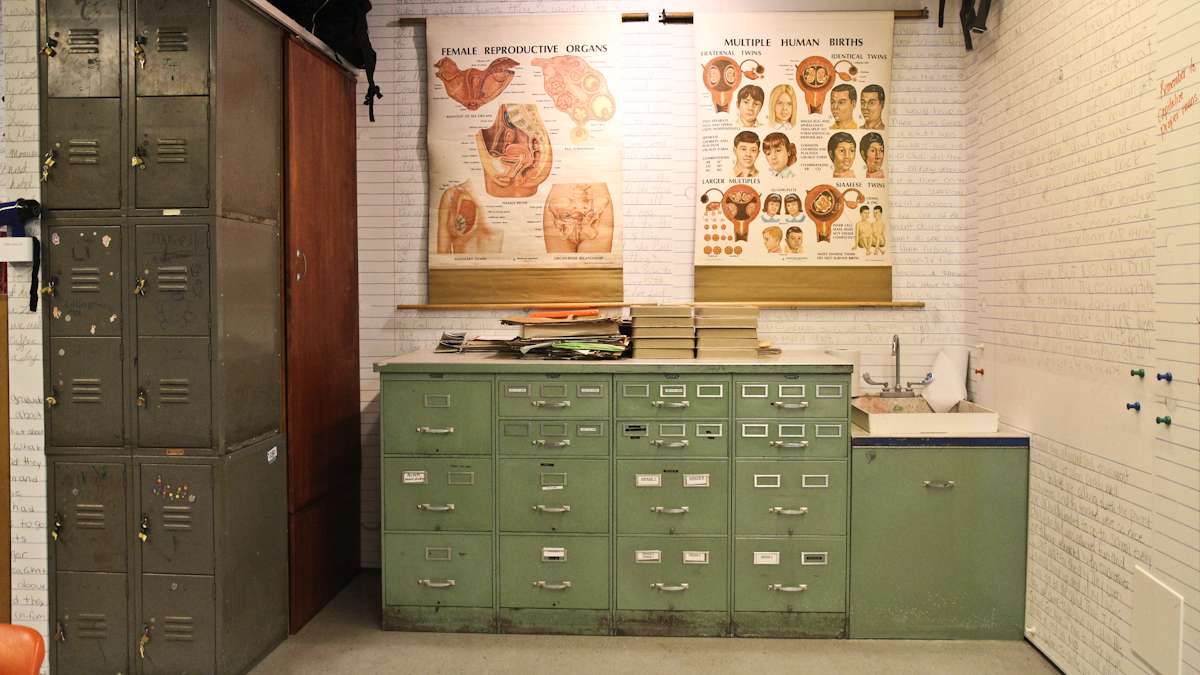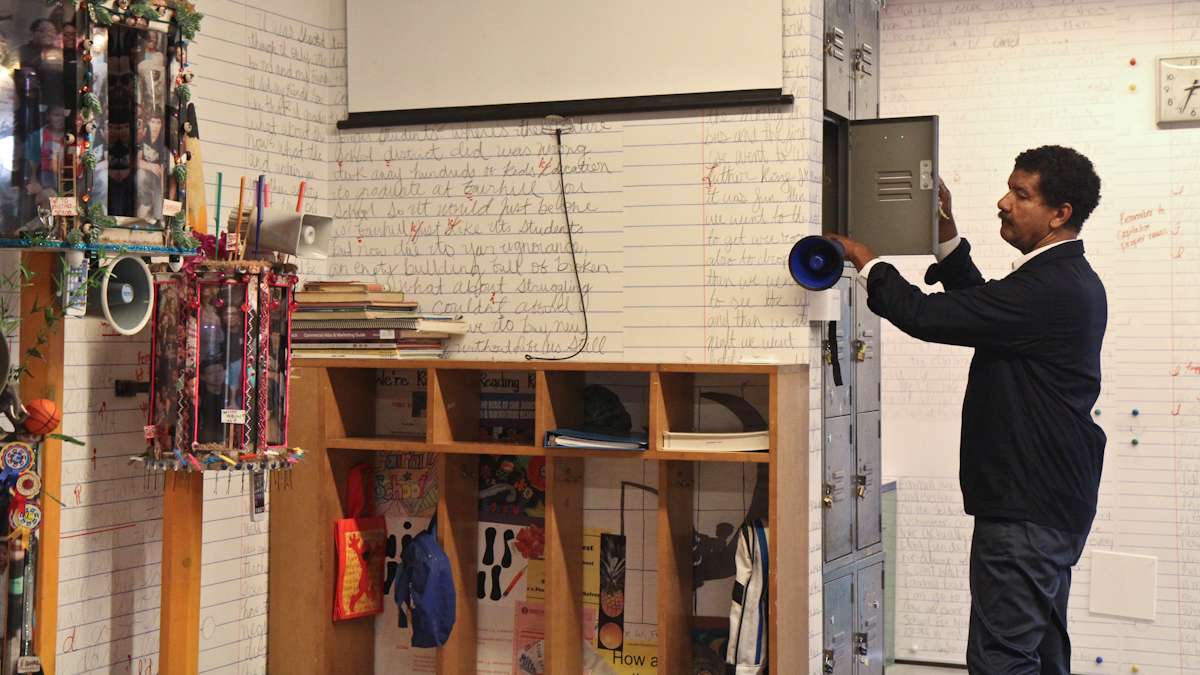‘ReForm’ recreates shuttered North Philly school in Tyler installation
ListenEvery empty building has a story to tell. When it comes to a shuttered North Philadelphia school, it’s a whole neighborhood of stories.
The empty Fairhill Elementary inspired artist Pepon Osorio to figure out how the closing affected the mostly Puerto Rican community around it. The result is a year-long installation at Temple University’s Tyler school of Art called “re-Form.”
Osorio decided to recreate the hallways, a large classroom and the feel of the empty school in the basement of Tyler — a middle school inside a college. He enlisted 10 students — dubbed the Bobcat Collective for the school mascot — and started to work.
“You walk in and what you see on all four wall are big pieces of composition paper with essays that we all wrote on it,” said Lynoska Santa, one of the 10. She graduated from Fairhill a year before it closed forever in 2013. “Then there’s like this cage with iPads and this video with this poem that a friend of mine wrote.”
With the refrain of “when we speak, you listen,” the poem repeated over and over in the exhibition is about “things that we went through when the school was taken from us, like not seeing our friends anymore,” Santa said.
Most of the Bobcats say collaborating with Osorio was hard but enjoyable work.
In addition to teaching at Tyler, Osorio is a prominent installation artist and a former social worker.
The exhibit includes a cardboard depiction of the Philadelphia School District’s headquarters and figurines of Superintendent William Hite and members of the School Reform Commission. Osorio said the films, photos, audio, multimedia and other objects used in the show have one purpose.
“It’s an opportunity to reflect and to be able to understand and to move education into a higher priority,” he said.
And for the students, it’s an opportunity “to understand that everything happens for a reason and that there are social and political implications to those decisions and to be a little more aware,” he said.
There are messages everywhere, from ceiling to floor. Osorio even includes a water fountain with a “do not drink water” sign on it — as can be found in some Philadelphia schools. On the side of the large room, tall towers, the size of lockers, act as totem poles. They include different personal objects from students and an iPad that displays them telling their stories.
“Why was our school closed,” asks one student in a video. “How come we just got a letter telling us of the decision with no explanation? I wanted my cousin to come from Puerto Rico to this school because I graduated from here. I’m going to miss my friends. We were like a family here”
Osorio’s work is never simple or isolated from his belief in social justice and equality. Once he comes up with an idea, dozens of people become part of the collective process — and the art work is a community happening.
In one installation, he built a transparent house in the style of the Puerto Rican “casitas” made up of photos of North Philly families printed in glass. Another of his installations took place in a crowded neighborhood barbershop. All places where people can gather and talk.
In “reForm,” he wanted to tap into a sense of loss for students and their families. Fairhill was one of about two dozen Philadelphia schools closed down in 2013, so this is a story familiar to many other neighborhoods and even other cities.
“I always start my work with three words — and the words I started with were, coincidentally, despair, loss and pain,” said Osorio, who started working in art installations in New York City in the 1980s before moving to Philadelphia. “There is a sense of that. There is a presence of loss, of despair around here.”
Osorio, who sees a common thread in these school closings, said it’s no “coincidence that these things always happen in places where there’s a lot of poverty, in places where people are the most fragile. All that is connected, one thing with the others.”
Pepon Osorio’s installation “reForm,” will remain at the Temple University’s Tyler School of Art until May. If you visit, you might meet some of the Bobcats, doing their high school homework there.
WHYY is your source for fact-based, in-depth journalism and information. As a nonprofit organization, we rely on financial support from readers like you. Please give today.
























